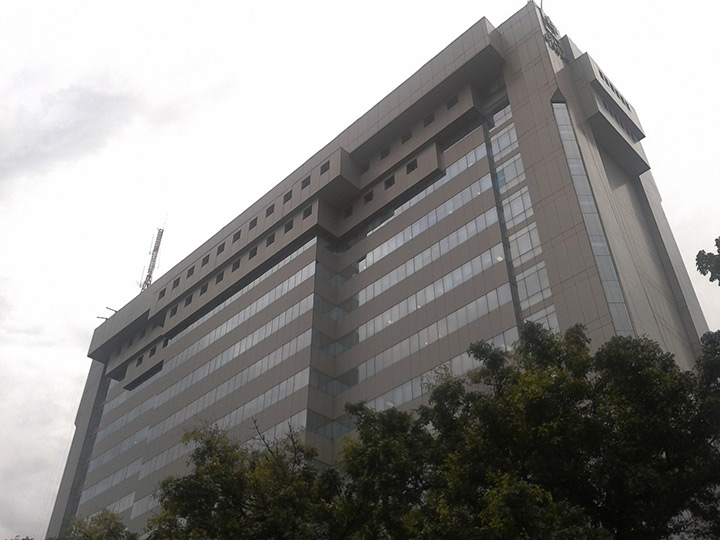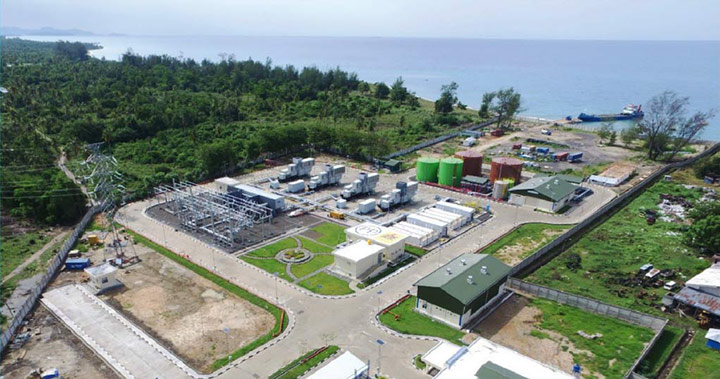Smart Metering Transforms Utilities: PLN is Building a Brighter Future with Storage Technology
This site uses cookies. By continuing to browse the site you are agreeing to our use of cookies. Read our privacy policy>
![]()
Enterprise products, solutions & services

With the end of pandemic-related restrictions kick-starting rapid global economic recovery, Indonesia's exports rose to a record high in 2022, supporting the country's strongest economic growth in nine years: up 5.31% year-on-year. Directly related, electricity consumption also surged, up 6.15%, leading PLN to renew focus on strategic goals to support its own growth: namely, green initiatives, innovation, a renewed commitment to customer-centricity, and a determination to be lean, in order to lower costs.
Today, of course, digitalization has become a priority for utilities enterprises across the globe and PLN is no exception. So, the company has proactively adopted digital business practices, committing to leading Indonesia's energy transition through the use of new technologies and state-of-the-art devices.
Indeed, the latest advances in technology have already proven key to PLN's success and it has fully embraced digital transformation, initiating 29 breakthrough projects covering all business lines. The most significant, perhaps, is the project to install smart meters. Suroso Isnandar, Chief of Information Technology (IT) and Digital Management for PLN, explained that the company has begun replacing traditional meters with smart devices to achieve access to real-time data with enhanced accuracy and integrity, in order to better communicate with and more efficiently monitor the status of customers, understand user behavior, manage loads, and handle billing. To this end, PLN has set an ambitious goal of installing 1.2 million smart meters by end-2023, with that number increasing to 4 million by 2025 and 10 million by 2030.
Advanced digital devices like smart meters measure and record electricity use in real-time. The technology provides detailed information about energy consumption patterns, allowing for better management of the electric grid. Data is collected from individual meters then transmitted over communications networks, such as cellular and Wi-Fi, to a Data Concentrator Unit (DCU), where it's subsequently converted into a format that can be sent to a Meter Data Management System (MDMS), like the one that sits at the core of PLN's massive network, for validation, processing, and storage. Then, for end-user's, a dedicated mobile app displays key information in an ultra-user-friendly format.
But PLN's MDMS was facing significant challenges, straining to manage a vast amount of data from diverse sources, given that surge in electricity consumption in Indonesia. So new, robust storage infrastructure was needed to handle the volume, velocity, and variety of the company’s data, else risk data corruption, loss, or inaccessibility, potentially leading to errors and inconsistencies.
In addition, data security and privacy is always a critical challenge: without a secure storage environment, data is vulnerable to cyber-attacks, data breaches, and other security threats. So an ultra-reliable storage system was also imperative for PLN.

Huawei OceanStor Dorado is now providing PLN with main storage capacity of 108 TB, through high-density disk enclosures and just 31 Solid-State Drives (SSDs), divided across two OceanStor Dorado 5000 series products. The solution is highly scalable and therefore an excellent fit for PLN's expansion plans over the next five years.
The SSDs form the main storage solution, which supports the large amount of data that is collected on a daily basis. The drives use flash memory, allowing for much faster read and write speeds compared to traditional Hard Disk Drives (HDDs). And, through the use of SSDs, PLN's own power consumption has fallen dramatically — by a factor of three — helping to build a green and low carbon data center, in line with the company's wider green mission.
Given that the company has millions of customers, workflows are massive. Traditional architectures that use a centralized controller to manage data access and storage offer limited scalability and can only handle a certain amount of data: as data loads increase, there's a very real risk of the controller being overloaded. And any service controller downtime is likely to significantly disrupt smart meter operations.

The active-active design of the twin OceanStor Dorado 5000 products delivers high availability and reliability, with the proprietary SmartMatrix algorithm optimizing the distribution of data across the system's controllers and SSDs, securing workflows. Indeed, with both controllers processing data simultaneously, any Single Point Of Failure (SPOF) is eliminated and the overall design provides six-nines reliability — 99.9999% — meaning that PLN's MDMS is never interrupted and always online.
All of this allows PLN to confidently collect accurate information over a period of months, to identify patterns in electricity use, including peaks, and adjust supply accordingly, helping to prevent blackouts and brownouts, as well as reducing the need for expensive peak-time power generation.
Reducing costs for customers is also key here. PLN's efficient MDMS and connected app help customers closely monitor their energy use, allowing them to make informed decisions about how to reduce consumption and save money, which also has important environmental benefits. The end result is improved customer satisfaction and reduced waste.
With active-active architecture supporting PLN’s data workflows, data backup is equally important, to safeguard against all eventualities.
PLN chose OceanProtect X6000 for backup in its main data center. Forming synchronous replication with the storage system, this solution replicates data across multiple sites, providing highly available and resilient infrastructure for critical business applications, supporting a wide range of storage systems and platforms, from Storage Area Network (SAN) and Network-Attached Storage (NAS) to cloud storage.
With additional advanced features such as compression and deduplication, OceanProtect X6000 ensures that data is always protected and secure during replication, while providing flexible and rapid recovery options.
And, given the very real threat of ransomware and other risks to critical national infrastructure, OceanProtect uses a unique encryption algorithm that provides unparalleled protection for private information, safeguarding against any loss of data or performance issues arising from intentional attacks or natural disasters. Data backups are retained over the long-term through tiered hot and cold data, with one backup site located at PLN's main site in Kebayoran Baru, Jakarta, and another Disaster Recovery (DR) solution physically distanced in Gandul, creating a robust foundation for the future.
In short, PLN can rest easy knowing that its data is in safe hands, allowing it to focus on core business operations instead.
Huawei's full-stack storage solution also optimizes Operations and Maintenance (O&M) by visualizing processes through a single interface, allowing IT staff to quickly locate and resolve any issues that arise. Plus, with Huawei's dedicated support team always on hand to offer technical consultation services, the company provides additional technical training to every customer's IT department during a solution's earliest design phase, effectively mitigating future risk.
So, with a clear digital vision in place, PLN has laid the foundation required to underpin its future growth, building on its position as a regional leader to power Indonesia into a digital future that's already shining bright.